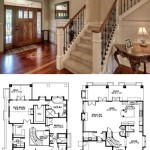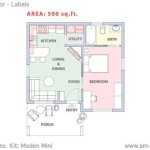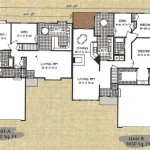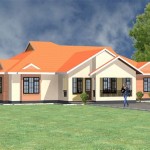Historic Tudor Revival House Plans: A Journey Through Time and Architecture
Historic Tudor Revival house plans offer a captivating glimpse into a romanticized past, blending the distinctive architectural elements of the Tudor period with the conveniences of modern living. This style, which enjoyed significant popularity in the United States from the late 19th century through the mid-20th century, continues to resonate with homeowners seeking character, charm, and a tangible connection to history. Understanding the core features, historical context, and contemporary adaptations of Tudor Revival architecture is crucial for appreciating and preserving these unique residences.
The Tudor Revival style emerged as part of a broader trend toward historical eclecticism, where architects and homeowners drew inspiration from various periods and regions. In the United States, the style became particularly popular in affluent suburban areas, where its picturesque qualities and association with Old World elegance were highly valued. The architectural movement was a reflection of a growing interest in European history and culture, particularly among the upper and middle classes. This interest was fueled by increased travel to Europe and the availability of books and magazines showcasing European architecture and design.
The Tudor style itself originates from England during the Tudor dynasty (1485-1603). The Revival movement, however, wasn't a strict replication. It took the most aesthetically pleasing elements and adapted them for modern constructions, leading to variations in materials, scale, and overall design. These adaptations allowed for the incorporation of modern amenities and construction techniques while maintaining the visual appeal of the original Tudor architecture. The result was a style that was both historically evocative and functionally adapted to contemporary needs.
Key Architectural Features of Tudor Revival Homes
Identifying a Tudor Revival home involves recognizing several distinctive architectural elements that define its character. These features, often combined in various ways, create the overall aesthetic of the style.
One of the most recognizable features is the steeply pitched roof, often with multiple gables. These gables may be front-facing, side-facing, or a combination of both, adding visual interest and complexity to the roofline. The steep pitch allows for efficient water runoff and snow shedding, a practical consideration in various climates. Dormers, which are windows projecting from the roof, are also common, providing additional light and ventilation to the attic space.
Another hallmark of Tudor Revival architecture is decorative half-timbering. This consists of exposed timber framework filled in with stucco, brick, or stone. While in true Tudor construction the timbers were structural, in the Revival style, they are often purely decorative, applied to the surface of the exterior walls. The contrasting colors and textures of the timber and infill create a visually striking pattern. The half-timbering is usually found in gables, around windows, and along the upper stories of the house.
Tall, narrow windows, often arranged in groups or rows, are another identifying feature. These windows are typically multi-paned, divided by small muntins into numerous individual panes of glass. Leaded glass, where smaller panes are joined together with lead strips, is also common, adding a touch of elegance and creating interesting patterns of light and shadow. The windows are often casement windows, which are hinged and swing outward, rather than sash windows that slide up and down.
Large, prominent chimneys are also characteristic of Tudor Revival homes. Often made of brick or stone, these chimneys are not only functional, providing ventilation for fireplaces, but also serve as a significant architectural element. The chimneys are often located on the exterior of the house, adding to its visual interest. They may feature decorative detailing, such as corbels, chimney pots, and elaborate brickwork.
Finally, arched doorways are a common feature, often surrounded by decorative stonework or brick. The arched shape provides a sense of grandeur and elegance. The entrance area may also feature a porch or entryway with exposed timber framing, further emphasizing the Tudor aesthetic. The front door is often solid wood, sometimes with decorative iron hardware, adding to the overall sense of quality and craftsmanship.
Historical Context and Evolution
Understanding the historical context of Tudor Revival architecture requires examining its origins and evolution. The movement was not a static phenomenon; it underwent various phases and adaptations, reflecting changing tastes and technological advancements.
The initial phase of Tudor Revival, in the late 19th and early 20th centuries, was characterized by a relatively faithful adherence to traditional Tudor design principles. Architects and builders sought to recreate the look and feel of authentic Tudor homes, using materials and techniques that closely resembled those used in the original period. This phase was often associated with wealthy clients who could afford the expense of handcrafted details and high-quality materials.
As the style gained popularity, it began to be adapted for a wider range of budgets and tastes. Simpler versions of Tudor Revival homes were constructed, using less expensive materials and streamlined designs. The decorative elements were often simplified or eliminated, resulting in a more restrained and practical aesthetic. This adaptation made the style accessible to a broader segment of the population.
The development of new building technologies and materials also influenced the evolution of Tudor Revival architecture. The introduction of plywood, for example, allowed for the creation of lighter and more affordable decorative timber framing. The availability of mass-produced windows and doors made it easier to incorporate Tudor-style elements into new construction. These technological advancements contributed to the proliferation of Tudor Revival homes across the country.
During the mid-20th century, the popularity of Tudor Revival began to wane, as new architectural styles emerged. However, the style continued to be appreciated for its charm and character, and many Tudor Revival homes have been well-maintained and preserved. In recent years, there has been a renewed interest in Tudor Revival architecture, with many homeowners seeking to restore and renovate existing Tudor homes or to incorporate Tudor-style elements into new construction.
Adapting Tudor Revival Plans for Modern Living
While historic Tudor Revival house plans are inherently appealing, adapting them for modern living often requires careful consideration. The needs and preferences of contemporary homeowners differ significantly from those of their predecessors, and architectural plans must be updated to reflect these changes.
One of the most common adaptations involves modernizing the interior layout. Traditional Tudor homes often feature small, compartmentalized rooms, which may not be suitable for contemporary lifestyles. Opening up the floor plan by combining living, dining, and kitchen areas can create a more spacious and functional living environment. This often involves removing walls or creating larger openings between rooms. Modern appliances and kitchen amenities can also be seamlessly integrated into the Tudor Revival design.
Another important consideration is the incorporation of modern amenities, such as updated electrical systems, plumbing, and HVAC systems. These systems are essential for ensuring the comfort and convenience of modern living. Careful planning is required to integrate these systems without compromising the aesthetic integrity of the historic design. Concealing wiring and ductwork can be challenging, but it is essential for maintaining the visual appeal of the interior.
Energy efficiency is also a key concern for modern homeowners. Upgrading insulation, windows, and doors can significantly reduce energy consumption and lower utility bills. High-performance windows that mimic the look of traditional multi-paned windows are available, providing both energy efficiency and aesthetic appeal. Adding insulation to walls and ceilings can also improve the comfort and energy efficiency of the home.
Finally, accessibility considerations are increasingly important. Adapting Tudor Revival homes to accommodate individuals with mobility limitations may involve adding ramps, widening doorways, and installing grab bars. These adaptations should be carefully designed to minimize their impact on the historic character of the home. Universal design principles can be applied to create a home that is both beautiful and accessible to all.
The ongoing allure of Historic Tudor Revival house plans lies in their timeless appeal and adaptability. By understanding the historical context, key architectural features, and contemporary adaptation strategies, homeowners and architects can ensure that these unique residences continue to thrive for generations to come. The blending of historical charm and modern convenience allows Tudor Revival homes to remain relevant and desirable in the ever-evolving landscape of residential architecture.

This Is So Perfect Super Attractive Has A Library Though I Probably Won T Be Needing The Servant Tudor House Plans Cottage Vintage

English Tudor House Plans For 2 Story Home With 4 Bedrooms

Spacious Tudor Revival Style Home Brick Many Bedrooms Detailed Hous Historic American Homes

Vintage House Plans 2356 Tudor Style Homes

American Homes Architecture From 1930 To 1965 Cottage Style House Plans Floor

Welcome To Dover Publications Vintage House Plans Tudor

Tudor Revival Mansion Printed House Plans Historic American Homes

Tudor Style Victorian Castle Detailed House Plans Historic American Homes

1920 National Plan Service Tudor House Vintage Plans Floor

Tudor Revival Mansion Printed House Plans Historic American Homes








